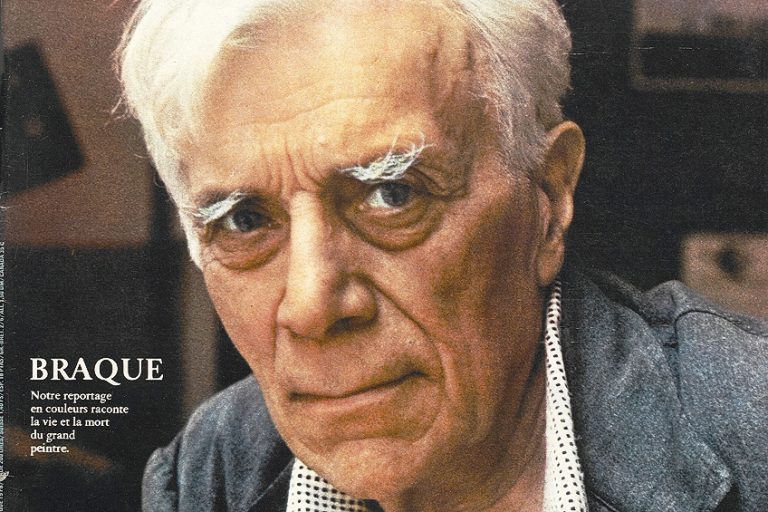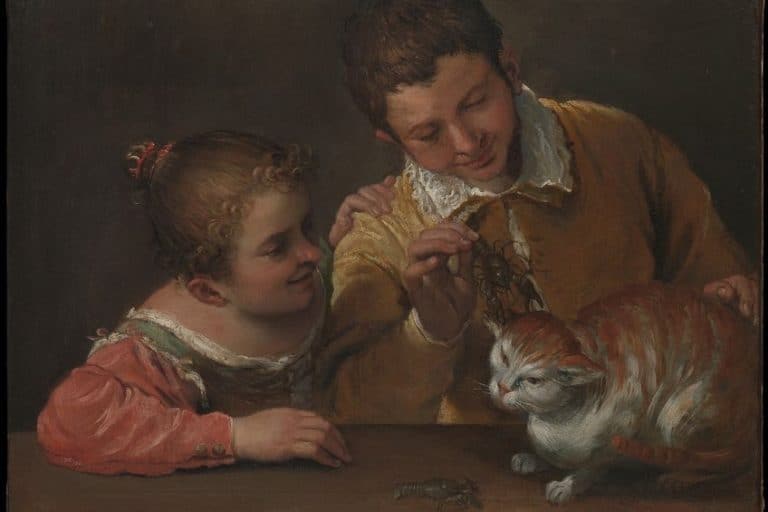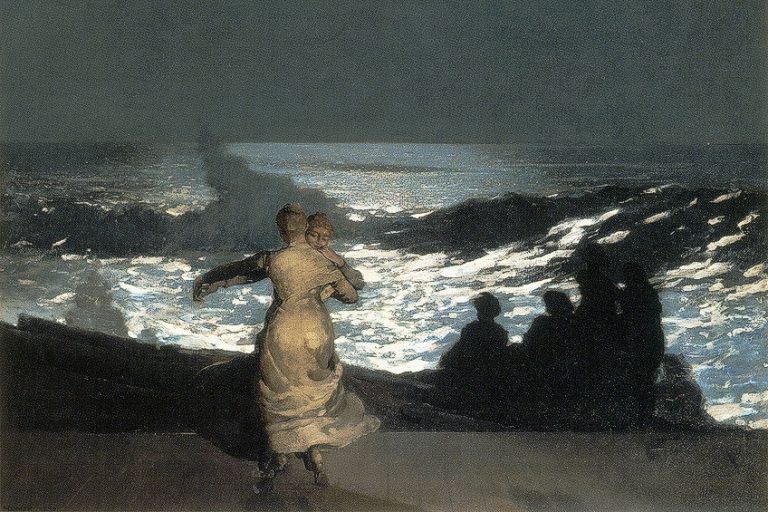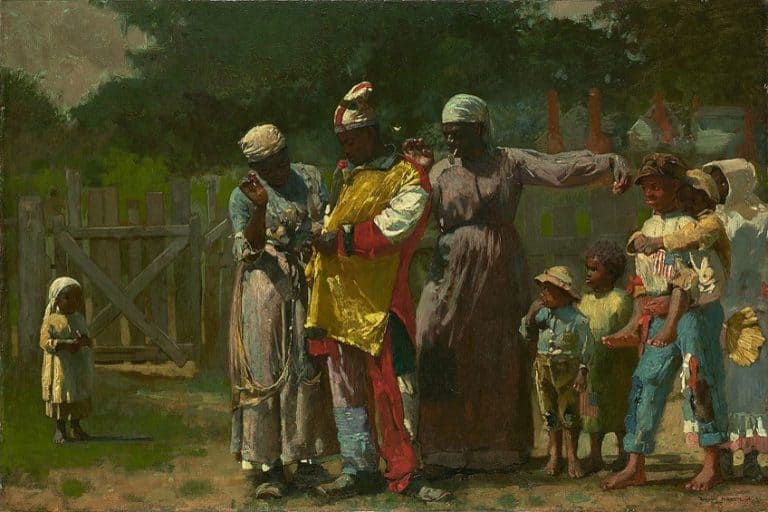“Death and the Miser” by Hieronymus Bosch – An Analysis
Death and the Miser is a painting by the Netherlandish artist Hieronymus Bosch, known for his detailed and symbolic works that often delve into morality and human folly. Renowned for its complexity and profound symbolism, the painting focuses on the final moments of a miser, depicted in the throes of death as he is visited by death and demons while angels vie for his soul. This article delves into a focused formal analysis of this haunting masterpiece, unraveling the symbolic language and artistic choices that render the painting a compelling testament to the transitory nature of life and the consequences of avarice.
Key Takeaways
- Death and the Miser is a visually complex work by Hieronymus Bosch housed at the National Gallery of Art.
- The painting is part of what was once a larger triptych, engaging with themes of morality in the context of life and death.
- Bosch’s work invites formal analysis and interpretation, reflecting his interest in the human condition and moral choices.
Historical Context
| Artist | Hieronymus Bosch (c. 1450 – 1516) |
| Date Created | 1490 – 1516 |
| Medium | Oil on wood |
| Genre | Religious and Moral Allegory |
| Period/Movement | Northern Renaissance |
| Dimensions (cm) | 93 x 31 |
| Series/Versions | Single work |
| Where Is It Housed? | National Gallery of Art, Washington D.C., United States |
| What It Is Worth | The estimated value is priceless |
In the late 15th century, Hieronymus Bosch created Death and the Miser, placing it within the rich tradition of early Netherlandish painting. It reflects the era’s preoccupation with the ars moriendi or art of dying, a genre that encompassed the Seven Deadly Sins and contemplated the Four Last Things: death, judgment, heaven, and hell.

The Painting’s Home
Originally from the city of ‘s-Hertogenbosch in Northern Europe, Death and the Miser now resides in the National Gallery of Art in Washington, D.C., thanks to the Samuel H. Kress Foundation. The painting was part of a triptych that included panels like The Ship of Fools and Allegory of Gluttony and Lust, currently held in Museum Boijmans Van Beuningen and Het Noordbrabants Museum. The Wayfarer, believed to be the exterior of the right panel, is displayed at the Museo del Prado.
Bosch’s work, once connected to the affluent city of Bruges, has journeyed from Flemish possession to American exhibition, emphasizing its impact beyond regional and temporal borders.
Formal Analysis
Death and the Miser is a vivid depiction of the final moments in a miser’s life, encapsulating the struggle between morality and vice through complex iconography and profound themes.
Iconography and Symbolism
In Death and the Miser, Hieronymus Bosch masterfully encapsulates the inevitability of death through an imposing figure wielding an arrow. The painting centers on a dying miser torn between a demon’s material temptations and an angel’s call to spiritual redemption. Symbolic figures of the demon and angel underscore the eternal battle between good and evil, magnifying the moral dilemma faced by the miser. The bag of gold represents the transient nature of wealth, posing a threat to salvation countered by the crucifix symbolizing spiritual hope. The miser’s grasp on a rosary signifies the potential for repentance and the importance of Christian faith.
Additional elements, such as a top-left roundel depicting consequences and a lantern symbolizing enlightenment, enrich Bosch’s exploration of morality, temptation, and redemption.

Themes and Meanings
Death and the Miser by Hieronymus Bosch critiques the cultural disdain for avarice and greed, presenting a universal dilemma between fleeting wealth and eternal salvation. Serving as a memento mori, the painting starkly underscores life’s transience and the insignificance of material possessions in the face of death. As a moral tale, it warns against succumbing to earthly temptations, emphasizing the importance of moral rectitude in the pursuit of spiritual well-being.
Bosch’s exploration of earthly vanity highlights the futility of human endeavors when confronted with the permanence of death, urging viewers to prioritize spiritual riches.

Interpretation of the Work
Hieronymus Bosch’s painting Death and the Miser serves as a visual representation of the moral ramifications of avarice and the tension between material wealth and spiritual salvation.

The Miser’s Moral Tale
The central theme of Death and the Miser revolves around the sinful nature of greed. Bosch illustrates the miser at a pivotal moment where he is torn between the salvation offered by the angel and the temptation of gold offered by a demonic creature. The items in the room symbolize this conflict: right next to the miser, a chest overflowing with wealth signifies earthly possessions.
All the while through the window, a crucifix points to spiritual redemption.
Resonance in Modern Times
In contemporary society, Death and the Miser maintains its relevance as it speaks to the eternal human conflict between materialism and moral integrity. Despite the passage of centuries, the allure of wealth and the consequences of its pursuit are issues that persist. Bosch’s vivid narrative continues to echo among audiences, serving as a timeless reminder of the moral choices one faces throughout life.

Death and the Miser by Hieronymus Bosch stands as a profound exploration of mortality and the consequences of a life consumed by earthly pursuits. Bosch’s meticulous detail and symbolic imagery create a haunting narrative that prompts contemplation on the transient nature of wealth and the inevitability of death. This masterpiece serves as a timeless reminder to reflect on the priorities that shape our lives and the ultimate futility of material obsessions in the face of mortality.
Frequently Asked Questions
What Does Death and the Miser symbolize?
Death and the Miser is a visual representation of the tension between morality and the pursuit of wealth. It serves as a cautionary tale, symbolizing the futility of accumulating riches in the face of death and the importance of spiritual salvation.
What Are the Major Themes Depicted in Death and the Miser?
The major themes in the work include the transience of life, the inevitability of death, and the critique of avarice. Bosch depicts the miser at the moment of death, surrounded by the embodiment of his choices, juxtaposing material wealth with spiritual poverty.
Isabella studied at the University of Cape Town in South Africa and graduated with a Bachelor of Arts majoring in English Literature & Language and Psychology. Throughout her undergraduate years, she took Art History as an additional subject and absolutely loved it. Building on from her art history knowledge that began in high school, art has always been a particular area of fascination for her. From learning about artworks previously unknown to her, or sharpening her existing understanding of specific works, the ability to continue learning within this interesting sphere excites her greatly.
Her focal points of interest in art history encompass profiling specific artists and art movements, as it is these areas where she is able to really dig deep into the rich narrative of the art world. Additionally, she particularly enjoys exploring the different artistic styles of the 20th century, as well as the important impact that female artists have had on the development of art history.
Learn more about Isabella Meyer and the Art in Context Team.
Cite this Article
Isabella, Meyer, ““Death and the Miser” by Hieronymus Bosch – An Analysis.” Art in Context. January 30, 2024. URL: https://artincontext.org/death-and-the-miser-by-hieronymus-bosch/
Meyer, I. (2024, 30 January). “Death and the Miser” by Hieronymus Bosch – An Analysis. Art in Context. https://artincontext.org/death-and-the-miser-by-hieronymus-bosch/
Meyer, Isabella. ““Death and the Miser” by Hieronymus Bosch – An Analysis.” Art in Context, January 30, 2024. https://artincontext.org/death-and-the-miser-by-hieronymus-bosch/.











